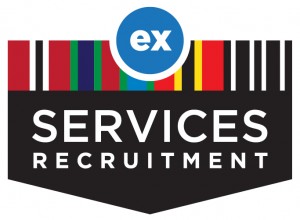Day 3 Update - Young Blake Expeditions voyage
Sea state: Calm to moderate swells
Weather: Fine
Wind: 25 knots NW
Air Temperature: 19oC
Date: 12 Feb
Location: 41o 36' S, 175o 34' E
Received from Hannah Prior - 12.2.14
After a long night's sleep - 10-12 hours for most of the crew - our third day at sea began with a spectacular sunrise, bacon and hash browns. As the student voyagers emerged from their cabins, and the smell of the bacon drew them towards the galley on wobbly sea-legs, we knew that today was going to be a better day.
Whilst we're at sea, the daily programme begins for Don Robertson and I with the 7:45am Command Brief on the Bridge. This is an opportunity for Commanding Officer LT CDR Phil Rowe to meet with the various heads of department on board the ship to discuss the plan for the day, the expected weather and any other updates and exciting activities planned. The brief normally takes around 10 - 15 minutes and is always informative. Today it was particularly so. I woke up thinking we'd had a calm crossing of Cook Strait overnight and were somewhere off Kaikoura, when in fact we were just off Castlepoint and wouldn't be anywhere near Cook Strait for several hours. As the geographer in the crew, this wasn't a terribly impressive assessment. Thankfully the ship's navigator, the officer of the watch and the crew on the bridge always know exactly where the ship is, where we're headed, the speed we're doing, and the answer to every other question asked by their 23 inquisitive guests. The Executive Officer has now given me a map, so that I might better acquaint myself with my surroundings.
On board HMNZS Wellington there always seem to be exciting activities planned. Today the student voyagers spent time in different parts of the ship, working with the crew and learning about their trades. The morning saw the group assisting with the watch on the bridge, down in the engine room, raising and lowering flags - including the Sir Peter Blake Trust flag with its albatross, now flying proudly alongside the white ensign and the magnificent birds themselves gliding across the crests of the waves and following the ship as we travel - and Ben doing an excellent job of slushie duty (the dishes). Jess and Mitchell spent some time in the galley preparing dessert for 80. Mitchell admitted, as he sliced and diced his way through a bucket of oranges, that his culinary experience to date had been limited to helping with the BBQ, so no doubt the Chandler family and 70 of their closest friends will be in for delicious fruit salad courtesy of Mitchell when he returns home to Nelson.
The ship's crew are constantly training and improving their skills, so we have also been able to observe how they would respond to floods, fires, mechanical breakdowns, man overboard and medical emergencies. Doctor Sheelagh is always happy to assist with these, and a couple of our student voyagers have been very convincing victims. Thankfully, the fake blood washes off (eventually), everyone still has all their fingers, and we're all safe in the knowledge that we're in very capable hands. At this stage, though, the ship doing donuts off the east coast of the North Island as young sailors have driving lessons, is still a bit of a test for some of those wobbly sea-legs.
As the working day draws to a close we are now finally approaching Kaikoura and are looking forward to some evening whale watching. We'll also be watching our backs as well, as Jed has instigated a crew-wide game of "Assassin". For those who may be unfamiliar, it's like cluedo on a larger scale…and a ship in this case. He doesn't know it yet, but Matt should be very wary of accepting my invitation to eat that beautiful fruit salad outside on the cargo deck this evening.
Received from Mania Oxenham - 12.2.14
What a journey so far! I think it would be safe to say that the 12 of us student voyagers have been put to the test already, waking up to a rocky boat on the second day, with 10 out of the 12 students already feeling the effects of seasickness.
But putting the seasickness aside, we have had plenty of time to get together and have some great group discussions. One of the key things we’ve talked about is leadership. Getting to talk about this as a group has been a real eye opener for me and it’s been great getting to listen to people like Sarah Trotman (a 2006 Blake Leader), who talked to us about her journey to success, as well as her failures, and then asked us about what we thought made a good leader.
Another person who spoke to us was the ship’s Commanding Officer, Phil Rowe, who shared Ernest Shackleton’s incredible tale of being stranded on the ice with his crew in Antarctica, and his 800-mile journey, in a 22ft boat, to ensure their rescue. Captain Rowe told us about what he personally thought made a good leader, including, being able to work together to overcome obstacles, getting the best out of each individual in the team and including other team members in decision-making.
There were many more traits that the Captain talked about, but those three things seemed to link together, as being particularly important, in an activity we took part in not long after. It was a survival simulation exercise, where we all had to figure out the best plan for our group to get off an island that we’d been shipwrecked on. We had to use each individual’s knowledge to make sure we would make the right choice and be able to tolerate each other’s different perspectives, because everyone thinks differently and your own plan isn’t always the best one. When I stop and think about these three things, I realise they all need to be used within my normal day-to-day life of sports and school.
Another thing I’ve enjoyed is having the opportunity to talk to members of the Navy crew personally, telling me how they get out of bed in the middle of the night to take part in practice drills, even though they don’t have to, just to help their team out. Or watching them work together to complete a task, which is near impossible for one person, like pulling a test dummy up the side of the ship in the unpleasant sea conditions or the communications between the engineers down in the bottom of the ship and the captain up in the bridge.
I find all these things I’ve observed onboard inspirational and a vital part of being a great leader and I hope that I can be more like them - going out of my way just to help someone out or even just offering my help. I am glad that I have had the opportunity to experience this and will be able to work on these things from this day on and carry on being inspired by these leaders for the rest of my life.



